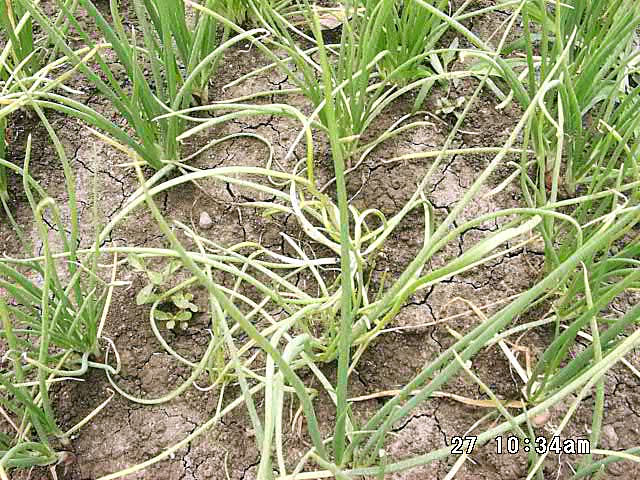Crops > Vegetables > Shallots & onions > ?Sclerotium cepivorum, Indonesia
Crops Vegetables Shallots & onions ?Sclerotium cepivorum, Indonesia
|
|
 |
|
|
May 2003. A disease of shallot in Indonesia, especially severe in central Java. It was assumed to be Botrytis. Symptoms appear 15-20 days after planting. What is it likely to be?
It was more likely to be caused by Sclerotium cepivorum, Allium white rot. It was suggested that the stems are incubated for a short time and then cut, when sclerotia of the fungus should be obvious, they look like pepper corms. The growth of the fungus is a white cottony mass, usually evident at the base of the shallot at the root plate.
This is an extremely hard disease to get rid of and areas which are not infected can be subject to quarantines. The sclerotia can remain viable in the soil for at least 15 years (maybe up to 50!). See: www.hdra.org.uk/factsheets/dc16.htm to learn more.
|
|
|
|
